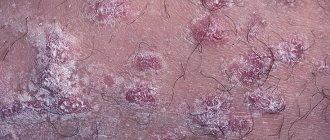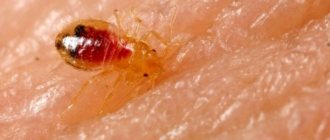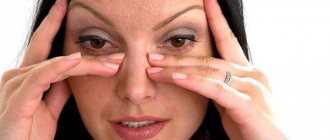Main causes of dry eyelid skin
The main reason why the skin of the eyelids suffers from dryness is that there are few sebaceous glands in this area, and therefore the hydrolipid film that retains moisture is thinner. This is why the area around the eyes can experience dryness, regardless of skin type.
The skin of the eyelid is naturally defenseless. © iStock
In addition to the vulnerability of the natural protective mantle, the epidermis around the eyes is thin and loose, which leads to moisture evaporation. As a result, the skin of the eyelids often becomes dehydrated.
Nutrient deficiencies
With a strict diet that excludes animal and vegetable fats, the body does not receive enough essential fatty acids, which can contribute to dry skin in general and eyelid skin in particular. “The eyes of some novice vegetarians also don’t look the best, since they sincerely believe that apples and buckwheat have enough iron, although this is not the case,” adds Vichy medical expert Elena Eliseeva.
Ultraviolet radiation provokes a protective reaction of the skin - hyperkeratosis, as a result of which the tissues appear rough. Cold wind brings tears to the eyes, and contact of salty liquid with skin in the cold inevitably leads not only to dryness, but also to irritation.
Low air humidity
The skin of the eyelids suffers greatly from dry air: in rooms with heating or air conditioning and in a car equipped with an air conditioning system.
It often causes dry and flaky eyelid skin.
Why might a child's eyelid peel?
The eyelid (lower or upper) can become itchy, red, itchy, swollen, and flaky for several common reasons:
- entry of a foreign body under the eyelid,
- allergic reactions,
- viral infection,
- demodicosis,
- blepharitis,
- skin dermatitis,
- use of low quality (or expired) cosmetics,
- reaction to poor quality water (in this case, itching begins after washing),
- reaction to various medications.
The second case is the most common, since the skin of the eyelids in children is thinner and more delicate than in adults, and therefore it reacts to external stimuli faster.
But for the development of such a pathology, direct contact of the organ of vision with the irritant is not always required: allergens can enter the body with food, as well as when various medicinal ointments and creams are applied to the eyelids.
Itching and peeling can occur with blepharitis, a disease of the eyelids in which the eyelid edge becomes inflamed.
The danger of such a disease is that it is almost impossible to diagnose it in the first and even subsequent stages, especially if the patient has no complaints.
Dry eyelid skin: what to do
All we can do is take into account the natural characteristics of the skin of the eyelids and eliminate or at least reduce the influence of negative factors that can aggravate the already difficult situation of the skin around the eyes.
Protect from ultraviolet radiation : sunglasses protect the retina of the eyes and the skin of the eyelids.
Use care products containing not only hydrofixatives, but also lipids: the skin of the eyelids needs both water and fats to prevent moisture evaporation.
Adjust your diet: a balanced diet rich in vegetables, vegetable oils , essential and non-essential fatty acids will help avoid excessive dry skin.
Treatment with drugs
The treatment strategy is selected only after conducting the necessary research and finding out the cause of flaking of the skin around the eyes
It is extremely important to eliminate the influence of negative factors that provoke the problem. Without this measure, further treatment will be useless. The main emphasis is on medication
The doctor may prescribe drugs from the following groups:
The main emphasis is on medication. The doctor may prescribe drugs from the following groups:
- antihistamines and antiallergic drugs;
- antibacterial drops, tablet antibiotics;
- antiviral agents;
- antibiotics;
- anti-inflammatory drugs;
- drops to moisturize the mucous membrane of the eyes (artificial tears for dry eye syndrome).
Medicines can help you get rid of unpleasant symptoms, as well as eliminate the very cause of eye skin problems.
Peeling can also be eliminated with the help of vitamins. For example, deterioration of the skin condition may be a sign of a deficiency of vitamins A and E.
Eyelids can be treated with tablets, drops, vitamin injections and ointments. To achieve optimal effect, it is necessary to combine drugs of different release forms.
A video about the features of the course and methods of treating eyelid dermatitis will be useful:
Rules for caring for the skin around the eyes
Since nature has saved on the sebaceous glands in this area, special products have been developed for the skin around the eyes, designed to artificially maintain the moisture-retaining hydrolipidic film. We'll tell you which textures cope better with this task and which ones are not suitable for dry eyelid skin.
Light cream, emulsion
These are ideal formulas: non-greasy, they are well absorbed, compensating for the lack of lipids.
Gel textures are not very comfortable for severely dry skin and can cause a feeling of tightness. It's best to avoid them.
Oils
Do you like oils? Choose ready-made formulas based on them, created by professionals specifically for eye contour care.
Precautionary measures
Sometimes we ourselves provoke increased dryness of the skin around the eyes. © iStock
It is often our own fault that the skin of the eyelids becomes extremely dry: by ignoring its characteristics and needs, we treat it inappropriately. Remember what you absolutely cannot do.
Wash off makeup with soap. The pH level and detergent base of the soap, as well as any products not created for eye makeup removal, are not suitable for this vulnerable area. She will respond with at least peeling.
Use face cream. Facial products are not suitable for the eye area due to its physiological characteristics. It is thinner, prone to swelling, plus it is in close proximity to the mucous membrane of the eye, which means there is a high risk of allergies and irritation. Even if you have already tested your face cream or serum in this area and nothing bad happened, do not relax. The reaction may not occur immediately, and dealing with its consequences will be more difficult.
Rub your eyes with your hands or a towel. This is an unacceptably rough manipulation for fragile skin with a weakened hydrolipid film.
Use of medications without indications. Buying eye drops for yourself without a doctor's prescription is not a good idea. Be careful with products that stimulate eyelash growth. Perhaps the eyelashes will indeed become longer, but what is the point if they “decorate” red eyes swollen from an allergic reaction?
Dryness around the eyes: causes and remedies that will help.
in Eye diseases 03/16/2019 0
Dryness around the eyes can be caused by climate, harsh chemicals, etc. First identify the cause and then treat it with the most effective remedies. The skin around the eyes is incredibly delicate, which means dryness around the eyes can cause irritation and redness. This dry skin under the eyes can occur for a wide variety of reasons, with just as many treatment options. The condition can range from mild to severe, and this determines whether simple solutions will work or whether you need to rely on stronger medical treatment. Once you know the reasons, you can find better ways to fix the problem.
What causes dry skin around the eyes?
Many things can lead to dry eye area, including skin and environmental issues.
Dermatological Disorders There are a number of dermatological disorders that can cause dry eyes, including:
- Sunburn: Any overexposure (or even exposure) to the sun's ultraviolet radiation can cause minor or severe burns to the skin of your eyes. You may also have dry skin near your eyes if you are exposed to welding arcs or sunlight.
- Blepharitis: This condition causes inflammation of the eyelids with scaly, dry skin. This may be caused by facial rosacea, seborrheic dermatitis or bacterial infections.
- Perioral dermatitis. This serious condition usually affects adult women and can spread to the mouth and nose area. This is a skin rash that usually occurs due to poor hygiene.
- Atopic dermatitis or eczema: This may affect the area around the eyes, such as the eyelids. Eczema can lead to flaky skin as well as dryness.
Causes
The reason why the eyelids itch, swell, turn red and peel can be determined based on the characteristics of the symptoms.
Eyelids are peeling
If the eyelid does not itch too much, and the patient is more concerned about noticeable peeling of the skin of the eyelids, the reasons may be as follows:
- Damage to the eyelids by eyelash mites, which reproduce in the eyelash follicles. This disorder can occur without any special symptoms and worsens only in the autumn-spring period. In this case, the activity of the mite during certain periods may be accompanied by itching.
- Blepharitis. This is an inflammatory disease of the eyelids, which is provoked by Staphylococcus aureus, less commonly, it occurs when the organs of vision are affected by other infections or allergies.
- Peeling of the eyelids can occur in people who spend too much time at the computer. The likelihood of developing this symptom may increase if the lighting is not good enough and the air in the room is too dry.
- This phenomenon can occur in women when using low-quality cosmetics.
- Peeling is a characteristic sign of a lack of vitamin B in the body.
Why do my eyelids itch?
In such cases, there is a risk of introducing additional infections into the organs of vision.
Itchy eyes are usually a sign of the following ophthalmic diseases:
- Dermatitis of atopic origin. In such cases, itching may be accompanied by uncontrollable profuse lacrimation and discharge from the eyes.
- Dermatitis of an allergic nature. This is the main and most common reason why the patient’s eyelids may itch. In this case, a variety of agents can act as allergens - from plant particles to dust, wool and chemical compounds, which in varying concentrations can be present in the environment. Allergic reactions can also occur to various cosmetics.
- Blepharitis.
- Ophthalmic rosacea. This is a chronic pathology in which swelling of the eyelid skin and its redness occur.
Red, scaly spots on the eyelids
Sometimes the eyelids do not just itch: individual localized red lesions develop on the skin, which are clearly visible during diagnosis.
In the first case, the spots appear in groups, turn red for a short period of time and begin to itch.
This is the body’s reaction to allergens such as cosmetics, household chemicals, medications, hair dye; in rare cases, certain foods can cause such a disorder.
In cases where a hemangioma is diagnosed, it is necessary to begin treatment as quickly as possible, since over time such formations can develop into a malignant form.
Hemangioma can be distinguished from allergic reactions by its appearance: this pathology manifests itself in the form of small scattered spots that have uneven “torn” edges.
Treatment mainly involves radiotherapy and the use of hormonal drugs, but for certain indications it is possible to remove hemangiomas surgically.
To determine the reason why peeling around the eyes appeared, the doctor must interview the patient in detail and find out when the unpleasant symptoms arose. During a visual examination, the shape of the spots, their severity and location near the eyes are determined. If after this it is not possible to make an accurate diagnosis, additional tests are prescribed. There are internal and external reasons that cause redness and peeling around the eyes.
Environmental influences include:
- sitting for a long time at a computer monitor,
- insect bites,
- infections,
- climate change,
- eye injuries,
- wearing lenses,
- chapping of the skin,
- allergies to cosmetics, animal hair, pollen, household chemicals.
If the area around the eyes has become dry and flaky due to vitamin deficiency, the body’s individual reaction to the use of medications, poor-quality products or diseases of the digestive tract, then it is customary to talk about an internal cause of irritation. In some cases, redness and peeling near the eyes indicate a person’s emotional overstrain, which manifests itself in an unusual way.
Demodex
A microorganism called demodex, or eyelash mite, lives in the subcutaneous layer even in healthy people, without showing itself for years. The dimensions of the parasite are tenths of a millimeter, so it is impossible to examine it without special equipment. The mite is transmitted from one person to another and affects areas of the body where the skin is thinner.
It often leads to the skin around the eyes flaking, dryness and redness, and eyelashes sticking together. In order to accurately establish or exclude the presence of eyelash mites, it is necessary to take a scraping from the affected area. The analysis is carried out in the laboratory under a microscope. After identifying the parasite, the doctor prescribes treatment. Modern ointments for demodicosis help to paralyze, destroy the tick, and relieve inflammation.
Allergic reactions
People suffering from allergies are often unaware of their illness. It can manifest itself in adults and children as cough, runny nose, cracks in the corners of the eyes, allergic peeling of the skin. If such symptoms appear, it is recommended to immediately consult an allergist. The most difficult thing in this situation is to identify the allergen that caused the reaction. To do this, a full examination is prescribed, including blood and urine tests.
However, even before the results of the examination are ready, it is necessary to exclude all possible reasons why the skin around the eyes is dry. Factors influencing allergies may include:
- low-quality cosmetics,
- medications,
- plant pollen,
- reaction to food products,
- temperature changes.
Infectious diseases
After these diseases go away, dryness around the eyes also disappears, so doctors advise identifying the source of the problem and eliminating it. If peeling began due to an eye infection, then you should urgently consult an ophthalmologist so that the inflammation does not become chronic and lead to blindness. Infectious eye diseases include:
- blepharitis,
- conjunctivitis,
- demodex,
- barley,
- herpes on the eye,
- other fungal infections.
When bacteria become the cause of an illness, you need to look for the source to avoid re-infection. A person can become infected through contact with other people and animals. Blepharitis and stye are caused by Staphylococcus aureus, which is present on the skin in a latent form. People with weak immune systems and poor eye hygiene are at risk of infection.
Intestinal diseases
Symptoms such as peeling of the eyelids often indicate that serious disturbances have occurred in the gastrointestinal tract. The following diseases of the digestive system can be the cause:
- gastritis,
- intestinal dysbiosis,
- chronic constipation,
- impaired absorption of food.
A factor influencing the formation of dry skin and redness around the eyes is poor nutrition, when a person abuses fatty and fried foods, eats food prepared in fast food. In this case, harmful carcinogens and toxins enter the body. They release toxic substances into the blood that cause skin allergies. The same manifestations are worrying if the diet lacks vitamins B and A, as well as due to dehydration.
The appearance of symptoms of blepharitis is caused by a number of different diseases, including incorrectly selected cosmetics and unsuccessful eyelash extensions. This all leads to changes in the skin and, in severe cases, spreads to the conjunctiva and eyeball.
Causes of blepharitis:
- cold wind,
- allergy,
- bacteria,
- viruses,
- fungi,
- unhealthy diet
- deficiency of vitamins and microelements,
- decreased immunity.
Allergies are accompanied by a number of symptoms in addition to peeling. These include watery eyes, swelling of the eyelids, itching and redness. They occur as a reaction to inappropriate cosmetics, medications, plants, animal dander, mold and some chemicals. A comprehensive allergen test will help identify the cause.
Dermatitis of the upper eyelid is accompanied by a burning sensation. It can be acute or chronic. It manifests itself with the following symptoms: runny nose, sneezing, rash all over the body and attacks of suffocation. It is worth remembering that contact lenses can cause dermatitis, especially if they are made of low-quality material.
After eyelash extensions, unpleasant symptoms may appear. This indicates the use of low-quality material. In this case, it is recommended to immediately remove the eyelash extensions.
In order to get rid of peeling caused by dermatitis, two treatment methods are used: local and systemic. Systemic medications block the production of histamine. The most common are diazolin, loratadine and suprastin. Monotherapy and combination drugs are used, which include a combination of the above substances.
Hormonal ointments and eye drops based on corticosteroids are used locally. These remedies are also used to get rid of acute manifestations and for additional treatment when the process becomes chronic. In case of severe illness, non-hormonal anti-inflammatory drugs are used.
If the eyelid is red, you can use vasoconstrictors; they will quickly remove hyperemia and swelling. Long-term use is contraindicated.
1. The first and main reason is chronic inflammation of the eyelids, which manifests itself in itching, redness, and irritation around the eyes. If you are prone to allergies, then one of its symptoms may be dry eyelids; this is how the body responds to the action of any remedy or product that you previously used. The problem may even be in your shampoo, so allergy sufferers are advised to use only hypoallergenic products.
2. Another reason for dry eyelids may be your decorative cosmetics, which you apply to your eyelashes or eyelids, so you need to carefully select your decorative cosmetics. It happens that having purchased a new eye cream with a different composition, the skin reacts instantly, then we can safely say that it was the new cream that caused the dryness, which needs to be replaced.
Why is the skin around the eye dry, what to do
Dry skin around the eyes can be caused by various reasons. Sometimes they are completely harmless: unfavorable weather conditions, incorrectly selected cosmetics, lack of water in the body, etc. But in some cases, dryness can be a sign of a dermatological disease: eczema, psoriasis, seborrheic dermatitis and others. Peeling and itching bring significant discomfort. The problem can be solved by using moisturizing masks and compresses made from folk remedies. But if dryness is caused by an illness, you cannot do without treatment from a professional doctor.
Dry skin around the eyes is determined by the following signs:
- first, the skin in this area begins to dry and peel;
- then itching appears, the eyelids constantly itch;
- if you rub your eye, the skin around it turns red;
- at the last stage, the redness becomes covered with a crust, which can hurt and eventually begins to crack.
All this does not decorate the face and causes serious discomfort. In addition, dry epidermis leads to accelerated formation of wrinkles.
If you do not pay attention to these symptoms in time and do not begin treatment, there is a risk of a secondary infection associated with damage to the skin.
Dry skin around the eyes can be caused by many reasons. These include:
- weather conditions (strong wind, low humidity, etc.);
- dry air in the house;
- use of cosmetics that are not suitable for your skin type;
- prolonged exposure to the sun;
- taking a shower or bath with hot water;
- lack of water or vitamins in the body;
- friction of delicate skin and other mechanical damage;
- dermatological diseases (eczema, psoriasis, seborrheic dermatitis);
- blepharitis;
- disruptions in the hormonal system, in which the sebaceous glands of the eyelids do not work correctly;
- bacterial infections (for example, lichen);
- allergic reactions;
- ocular conjunctivitis and other mucosal irritations.
These diseases sometimes occur due to stress. Therefore, overwork, lack of sleep and depression are also considered indirect causes of dry skin.
Women face this problem more often than men. After all, women's skin is much more prone to dryness.
In children, the skin around the eyes is especially thin and delicate. Therefore, irritation easily occurs under the influence of negative environmental factors. In addition, the child often develops various allergic reactions.
If the skin of your eyelids is crusty and itchy, you should not self-medicate. Before using any products, you should consult a dermatologist.
Symptoms
The appearance of peeling areas of skin around the eyes may be the only symptom of problems in the body, but most often it is accompanied by other complaints. These include:
- loss of eyelashes and eyebrows,
- itching,
- change in skin color and texture (redness, strengthening or weakening of natural pigmentation, skin pattern),
- the appearance of blisters or other rash elements,
- the appearance of purulent or mucous discharge from the eyes,
- swelling of the skin.
The manifestation of these clinical signs will help the doctor determine the nature of the disease and its causes, therefore, when visiting medical institutions, you need to indicate in detail how and after what the symptoms bothering the person developed.
With allergic manifestations, both eyes are usually affected, causing severe swelling, watery eyes and a runny nose. Often these signs appear after eating certain foods or during the flowering of certain types of plants. Typically, adults already know the substances that cause their corresponding complaints.
When affected by some skin mites, individual itchy and flaky areas of skin appear near the eyelashes. Symptoms usually appear in the autumn and spring months or after a decrease in immunity. They can go away on their own without treatment.
Blepharitis (inflammation of the ciliary edge of both eyelids) can be a consequence of the development of pathogenic microorganisms (viruses, fungi, bacteria). It may appear in one or both eyes, accompanied by pain, purulent or mucous discharge from the eyes, and redness of the skin. Sometimes the disease spreads to the mucous membrane of the eye itself, causing conjunctivitis.
Peeling of the skin in the eyelid area can occur after a chemical burn or exposure to ultraviolet radiation, for example, in a solarium or when welding metals. It is usually accompanied by eyelid soreness, sensitivity to bright light, and redness. In more severe cases, blisters with transparent contents may appear on the eyelids.
With hormonal problems, the appearance of skin flakes may be accompanied by loss of eyelashes and changes in pigmentation. Typically, such manifestations of diseases do not cause severe itching or pain, but they can cause psychological discomfort, especially in women.
Symptoms caused by low-quality cosmetics or false eyelash glue are usually immediately associated with the use of these products and worsen after repeated application to the skin. This can cause contact dermatitis on the eyelids or allergic reactions.
It is not always possible to independently determine the cause of peeling skin near the eyes, so it is better to consult a dermatologist or ophthalmologist. Only a doctor can correctly assess all the existing clinical signs and determine the disease that caused them.
Possible reasons why the upper eyelid may peel, itch, turn red, and even swell
Peeling of the upper eyelid is a rather unpleasant process, because flaking skin particles spoil the appearance, reduce self-esteem and performance. Very often peeling is accompanied by other symptoms:
- pain in the eyes;
- redness of the mucous membrane;
- swelling;
- pain;
- formation of pustules on the eyelid.
The cause of peeling eyelids may be:
- allergic reaction to food, cosmetics, plants, animals or dust. In this case, peeling is preceded (or accompanied by) a red spot, swelling, and copious release of tear fluid;
- dry eye syndrome, which usually occurs in older people;
- respiratory viral infections;
- using low-quality, inappropriate eye cosmetics or expired products;
- dry and naturally sensitive skin;
- chronic fatigue, lack of sleep and prolonged work at the computer;
- washing with hard tap water using aggressive agents, such as regular soap;
- long stay in a room with dry warm air;
- using contact lenses for longer than the recommended time or being allergic to the solution for storing them.
These factors do not pose a serious threat to health and are easily eliminated.
Peeling can also occur when sand, insects or other small objects get into the eyes. At first there is severe itching and tearing. Peeling in this case is a reaction to constant skin irritation.
Peeling of the skin near the eyes can be one of the manifestations of certain pathologies:
A dermatological disease that occurs when infected with hair mites. The pathology is accompanied by severe discomfort, redness of the whites and severe itching. In severe cases, foaming fluid is released from the eyes and eyelashes fall out. Every person has microscopic mites; pathological changes occur when the immune system is weakened.
They manifest themselves as itching and peeling on the scalp and eyelids. Infection occurs through contact with infected people, animals, or after prolonged use of antibiotics.
- Viral diseases (most often herpes).
Very often they affect only one eye, but are easily transferred to the healthy one by touching. Viral infections are manifested by redness and dryness of the eyelid, subsequently small blisters filled with liquid form on the skin.
Viral or bacterial infections of the eyes, the symptoms of which are redness of the whites, photophobia, tearing. In advanced cases, pus is released, sometimes in large quantities.
A painful bacterial lump on the eyelid caused by inflammation of the sebaceous ducts. The disease develops acutely, initially there is discomfort, itching and lacrimation, headaches, and a foreign body is felt in the eye. Gradually the size of the stye increases, after some time it ripens and pus comes out.
A pathological condition of the eyes that occurs in people with weak immunity or gastrointestinal disorders. The eyes are constantly itchy, watery, and may become red and swollen. At the last stage, severe peeling of the eyelids and loss of eyelashes are observed.
Why do my eyelids peel?
It is impossible to give a definite answer to the question of why the skin of the eyelids peels, since there are many reasons for this. They can be divided into six main groups:
- allergy;
- fungal infections;
- bacteria;
- viruses;
- eyelash mite;
- dry skin and eye fatigue.
Peeling skin on the eyelids is often caused by the activity of eyelash mites, which are activated only under certain conditions, for example, with decreased immunity or metabolic disorders. The disease is called demodicosis and is manifested by itching, purulent discharge from the eyes and even loss of eyelashes.
Causes can also be allergic in nature, and peeling of the eyelids develops as a reaction to cosmetics, food, medications or pollen.
With allergies, the skin of both eyes always peels off and is accompanied by itching, swelling and redness. If peeling of the eyelids and abundant mucous discharge from the eyes are observed, then it is likely that the cause is a bacterial infection, for example, chlamydia can provoke a similar problem.
If peeling is caused by a fungus, then most often it is fungal conjunctivitis, which can be infected from people, animals, through contact with plants, through contaminated water. In this case, at first, the skin only on the upper or lower eyelid is often affected. Why does fungal conjunctivitis develop? A common cause is prolonged use of antibacterial drugs.
If the causes are viruses, for example, herpes, then blisters and papules form on the eyelids, painful itching and damage to one eye are typical. Often the skin on the eyelids peels due to a lack of vitamins or a weakened body after an illness; problems with the gastrointestinal tract, diabetes, metabolic failure, and dental diseases can also be a provocateur.
How to get rid of peeling eyelid skin
Any eye disease, even minor, requires proper treatment.
Such a seemingly harmless symptom as peeling on the eyelids should not be ignored. If, apart from dry eyelids, there are no other symptoms (pain, photophobia), or there is no opportunity to get to an ophthalmologist, you can try to alleviate the condition yourself:
- Provide rest to your eyes - limit watching TV, do not use the computer. Wear sunglasses when going out into the sun.
- Apply brewed and squeezed tea bags to your eyes, make compresses with natural rose water and herbal infusions.
- Do not use decorative cosmetics.
- Do not eat possible allergens.
- Relax and get a good night's sleep.
- Do not use contact lenses
If the cause of peeling of the eyelids is minor (overwork, allergies to cosmetics), your health will improve after eliminating the irritant, and after a few days the skin condition will normalize.
Diagnostics
Diagnosis of the cause that caused pathological changes in the eyelids and eyes is usually carried out on the basis of external signs. The ophthalmologist examines the patient, asks about concomitant symptoms and previous diseases.
In some cases, it is necessary to conduct a laboratory study of discharge from the eyes, tear fluid; if demodicosis is suspected, the subject of the study is the eyelashes (several pieces from the lower and upper eyelids).
After diagnosis, treatment is prescribed; the principle of therapy is selected individually in each case.
Here are the basic rules:
- Allergies can be treated with antihistamines in the form of tablets or ointments.
- For keratitis and conjunctivitis, antibacterial drops and ointments are used; in severe cases, oral administration is recommended.
- Treatment of demodicosis is carried out comprehensively - the patient is recommended to undergo antiparasitic treatment of the eyelids, take immunomodulators and vitamins, and associated symptoms are eliminated with antihistamines.
- Treatment of stye requires caution. Before ripening, it is not recommended to warm it up at home, but it is permissible to speed up the process with physical procedures. If its size is large or the patient experiences severe discomfort, the stye is opened in the hospital. To speed up healing and prevent the spread of infection, use antibacterial ointments and lotions.
- To eliminate eye fatigue, special moisturizing drops, vitamins, and eye exercises are prescribed.
The duration of treatment, list of medications and dosage are selected individually.
Medicines
Treatment of many eye diseases is carried out comprehensively and is prescribed by a doctor, based on the severity of the disease, age and health of the patient. The list of medications varies in each specific case. The most available drugs:
- Antibiotics are drugs of synthetic and biological origin with an antimicrobial effect.
Okomistin, Levomycytin, Albucid, Torbex, Tsipromed are prescribed in the form of drops. When the mucous membranes and membrane of the eyeball are affected, it is more effective to use ointments: tetracycline, Torbex.
- Antiseptics to prevent the spread of infections.
For eye diseases, use the most gentle, non-irritating mucous agents: Vitabact, boric acid solution or preparations with silver.
- Antihistamines are drugs to relieve itching and swelling.
These can be traditional Claritin, Loratidine tablets or topical preparations: Alergodil drops, Opatonol, hormonal ointments with hydrocortisone or dexamethasone.
- Antiviral agents: Anaferon, Acyclovir (ointment), Solcoseryl.
- Antifungal drugs: Levorin, Nystatin.
- Anti-inflammatory drugs are used if eye damage and peeling are non-infectious: Dexamethasone drops, Sofradex, Maxitrol.
- Vasoconstrictor drops, for example, the well-known Visine, help eliminate eye fatigue.
To increase the body's resistance to infections, immunostimulants (Echinacea tincture, Ergoferon) and vitamin complexes are prescribed. In the treatment of eye diseases, biological supplements with blueberries and eye vitamins are effective: Vitrum Vision, Complivit Oftalmo.
If treatment involves the use of several types of drops, they are applied at intervals of at least 15 minutes. Ointments intended to act on the eyeball are usually placed under the eyelid at night.
Traditional therapy
You can get rid of peeling eyelids and other signs of eye disease using alternative medicine.
They can be used if a symptom occurs as a result of allergies, fatigue, dry air, or as an auxiliary method in the treatment of serious diseases (usually after recovery). To moisturize the skin, you need to wash your face with boiled, melt water, herbal decoctions or natural tar soap. The latter has unique properties: along with a pronounced antibacterial effect, it softens and moisturizes the skin.
Herbal decoctions can be used for rinsing and lotions. To prepare healing liquids, chamomile, St. John's wort, calendula, string, and celandine are used. The last two are used if it is necessary to eliminate the inflammatory process. They are not suitable for healing or dry skin, as they are very drying. Celandine is a poisonous plant, so you must be careful when using it.
The preparation of the medicine is very simple: a tablespoon of any herb (or a mixture of several) is poured with a glass of boiling water and kept in a closed container until it cools or boiled in a water bath for 5-10 minutes. The liquid is filtered through thick cloth and used:
- As lotions (compresses). Cotton pads or a piece of cloth are moistened in liquid and applied to closed eyelids for 15-30 minutes.
- For washing eyes. Moisten a cotton pad generously and wipe the eye from the nose to the temple. If both eyes are affected, use separate discs.
- For rinsing the face after washing. The infusion is diluted with boiled water (1 to 5) and irrigated on the face.
For the same purposes, you can use black tea, preferably large leaf tea without additives. It is necessary to prepare a very strong brew and use it as described above.
Softening masks made from available products will help eliminate peeling.
- grate raw large carrots on a fine grater;
- add the yolk of a chicken egg to the vegetable mass, mix;
- add 1.5-2 tablespoons of flour to the mixture and beat well;
- apply the mixture in a thick layer to the eyelid;
- leave for 20 minutes and rinse.
- mash a ripe banana with a fork;
- melt 2 tablespoons of honey and the same amount of butter in a water bath;
- connect all components;
- Apply on eyelids and wash off after a quarter of an hour.
- Boil large potatoes in their skins, cool and mash;
- soak a piece of white bread in cream;
- connect both components;
- Apply on eyelid for 20 minutes.
Fresh parsley juice, a mixture of carrot and apple juice, cosmetic oils (cocoa, peach, wheat germ, shea) or regular olive oil will soften delicate skin.
During treatment, you need to pay great attention to hygiene procedures, stop wearing contact lenses and follow all the doctor’s recommendations.
Prevention
Often, peeling and many ophthalmological disorders are easier to prevent than to eliminate later. To do this, you need to follow the following recommendations:
- exclude possible allergens;
- replace contact lenses on time (after any infectious diseases, be sure to purchase a new pair);
- use high-quality decorative cosmetics, cleansers and care products;
- remove makeup every evening;
- spend less time at the computer, take regular breaks from work;
- humidify the air in the room;
- do not touch your eyes with dirty hands.
Peeling skin can occur due to frequent stress or lack of vitamins. To prevent the problem, you need to eat foods that contain substances beneficial to the skin:
- dairy products;
- fish;
- liver;
- nuts;
- fresh seasonal fruits and vegetables;
- lean meat;
- liquid (pure water, herbal teas) in an amount of 2 liters per day.
Excessive dryness and flaking of the skin on the upper eyelid is one of the signs of dysfunction of the body or visual system. This symptom cannot be ignored; if it occurs, it is necessary to change your diet, lifestyle and consult a specialist.










